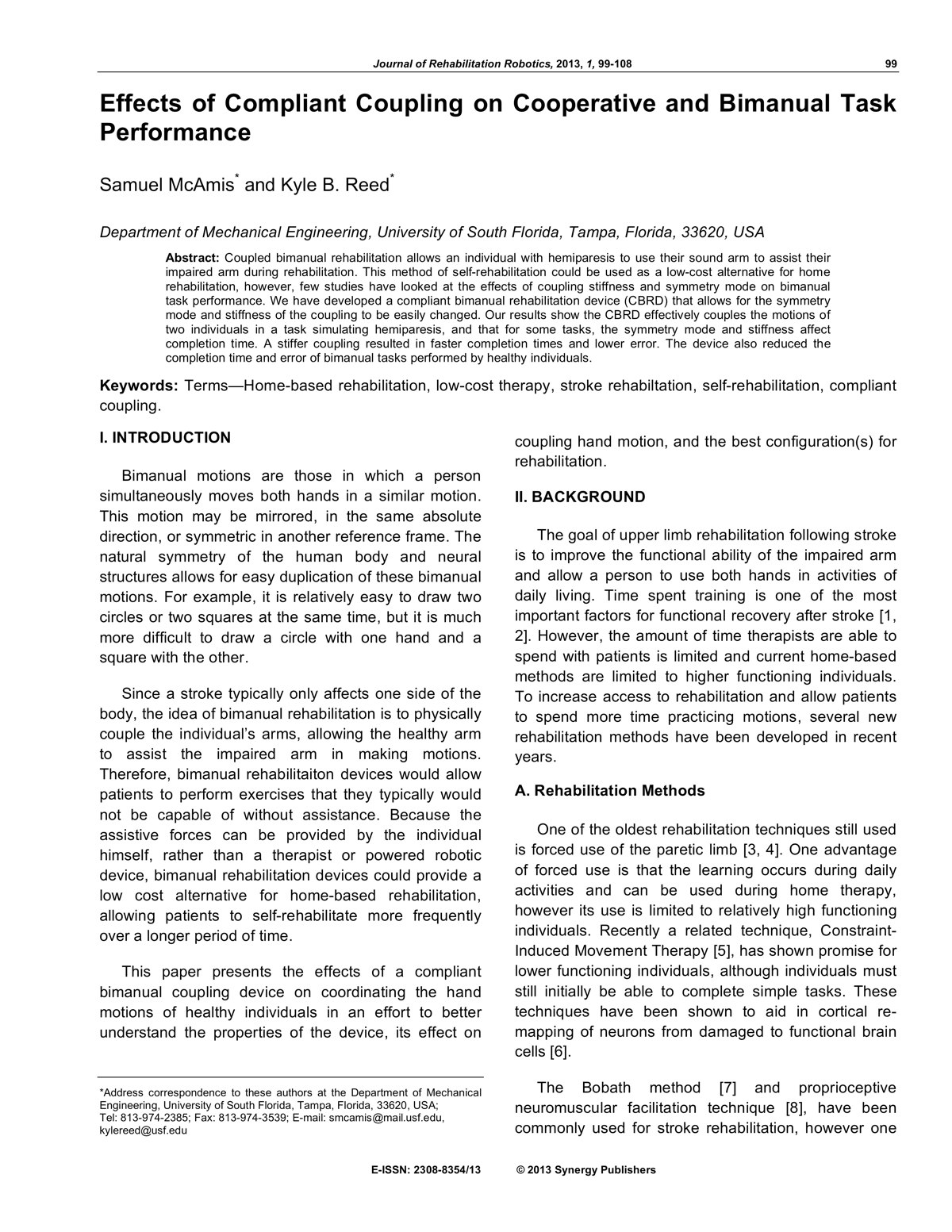|
|
Effects of Compliant Coupling on Cooperative and Bimanual Task Performance
Abstract - Coupled bimanual rehabilitation allows an individual with hemiparesis to use their sound arm to assist their impaired arm during rehabilitation. This method of self-rehabilitation could be used as a low-cost alternative for home rehabilitation, however, few studies have looked at the effects of coupling stiffness and symmetry mode on bimanual task performance. We have developed a compliant bimanual rehabilitation device (CBRD) that allows for the symmetry mode and stiffness of the coupling to be easily changed. Our results show the CBRD effectively couples the motions of two individuals in a task simulating hemiparesis, and that for some tasks, the symmetry mode and stiffness affect completion time. A stiffer coupling resulted in faster completion times and lower error. The device also reduced the completion time and error of bimanual tasks performed by healthy individuals.
[ download pdf ]

|





